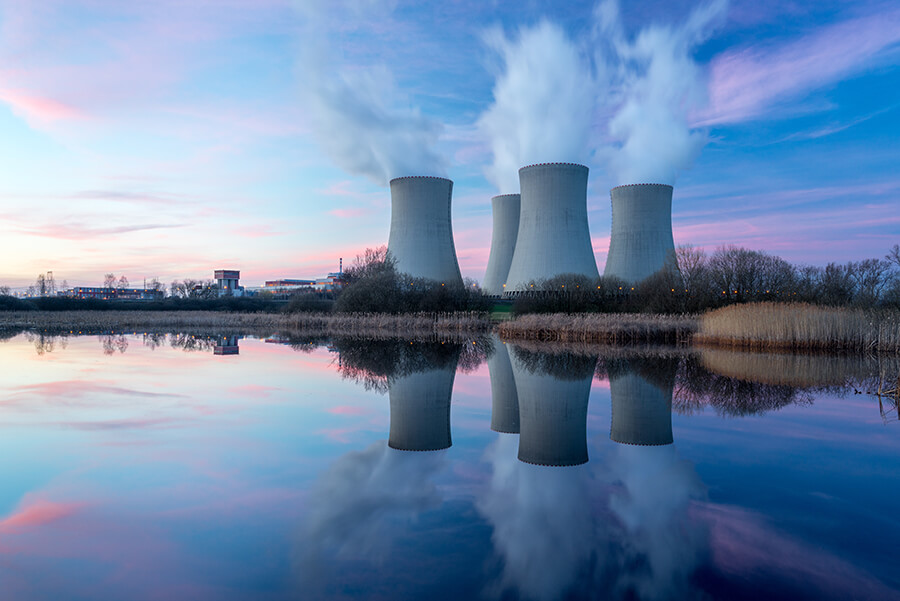RESOURCES | post
Category: Digital Transformation
The Oil and Gas (O&G) industry is in the throes of a major digital transformation to meet today’s energy demands in an efficient and effective manner. Many companies are adopting sophisticated technologies to rapidly locate, produce, and deliver energy for consumption. Yet as the demand for O&G escalates and natural resources become increasingly scarce, companies face increasingly complex challenges that threaten production yields and profitability.
In the Upstream O&G sector, a major dilemma is finding ways to streamline production and increase yield while reducing the cost of operations. Exorbitant amounts of money and manpower are required to design and build facilities, manage materials and equipment, extract resources, and cost-effectively dispose of water.
O&G wells bring large amounts of water to the surface. In fact, wells can produce 20X more water than oil or gas, and this water is often saline and unsuitable for surface disposal. As a result, common disposal expenses include permits, separation facilities, pumps, additional pipelines, injection wells, and more. Producing this water can also lead to costly and sometimes catastrophic corrosion, solids buildup (fouling or scaling), emulsion, and reservoir souring problems.
To succeed in this demanding marketplace, Upstream O&G companies rely on transformative technologies to harness deep water chemistry insights, assess risk, and optimize operations end-to-end. These capabilities are essential to explore potential complications, drive efficiencies, and determine the most effective way to produce O&G for maximum profit and minimum risk.
Overcome Upstream O&G production challenges with water chemistry
Today’s companies are seeking advanced water chemistry technologies and capabilities to enhance Upstream O&G production. OLI Systems, Inc. is leading the industry with water chemistry process modeling tools. These tools help companies design water handling and disposal facilities, simulate production and processing, calculate the likelihood of corrosion or scaling, plus many other critical insights. OLI Systems enables customers to visualize, predict, and solve their most demanding and costly challenges with water chemistry simulation software that delivers highly detailed, accurate insights to optimize operations and reduce risk. With a combination of rigorous thermodynamic models, software, and an extensive database, OLI Systems provides comprehensive water chemistry solutions through predictive modeling over a broad range of temperatures and pressures using unique chemistries—unlike anyone on the market.
To operate as effectively and economically as possible, O&G companies must be able to predict when and where problems will occur as well as optimize the use of materials and resources to drive profit margins. Today’s companies face three main challenges that are compelling them to invest in the latest technology innovations to evolve their upstream procedures.
Balancing the cost of production with product yield is critical to remain economical and competitive. However, with crude oil prices surpassing $70 per barrel, efficiency is becoming slightly less imperative as oil prices increase. Now, the cost of operations and other consequences of production can be managed by producing O&G more quickly and turning a higher profit. OLI Systems utilizes comprehensive water chemistry analysis expertise to create modeling tools and capabilities that improve process design and accurately predict operational risk, which empowers O&G producers to make these types of tradeoffs in an optimal manner.
Another major challenge is mitigating scaling and corrosion. When hydrocarbons are produced (the chief components of petroleum and natural gas), salt-rich water in the same process can cause a number of issues. One of the most common issues is fouling in which, over time, mineral scale buildup chokes off tubing. As water clogs or corrodes pipelines—which can be over a mile long—companies are forced to pause operations, pull up pipeline, install new pipes, and then resume operations. This cuts off all revenue for an expensive and time-consuming fix with costly materials that increases operational costs and reduces profitability.
The prescriptive approach is to utilize scaling and corrosion modeling to avoid this situation altogether. OLI Systems’ water chemistry simulation and modeling tools allow companies to predict if they have a corrosive environment, by pinpointing how and why a problem will occur and how and where to treat it. By uncovering these insights, OLI Systems creates a personalized treatment option to help companies prevent issues and achieve optimal production. Leveraging cutting-edge software tools, OLI Systems provides state-of-the-art process simulation which enables key capabilities like mineral scale and corrosion prediction, prevention, and control.
A third challenge is managing the vast amounts of water generated by Upstream O&G operations. Because this water isn’t environmentally friendly, companies must find ways to evaporate it to salts, reinject it, or treat it—all of which require time, money, and resources. OLI Systems’ process simulator assists companies in handling their discharge water. This critical technology determines the most cost-effective and efficient way to process water: Should it be treated to remove solids? Is it too saline to be disposed of in surface waterways? Can it be injected back into the well? Will it damage operating equipment? Solving these complex questions is the difference between a successful Upstream operation and one that loses time and revenue.
As companies seek new sources of hydrocarbon, they will continuously encounter more unique and complex geochemical environments. OLI Systems’ prediction chemistry is unlike any other tool, with the ability to identify critical properties of the most extreme and remote environments to guide design, construction, and implementation. The development of high-pressure, high-temperature (HPHT) chemistry has dramatically extended simulation capabilities to predict the formation of mineral scale—PbS, ZnS, CaCO3, and others —beyond the scope of other technologies. In addition to sophisticated models, software, and profound chemistry expertise, HPHT electrolyte thermodynamics is setting OLI Systems apart and equipping O&G companies for not just for today but also the future.
Transform water chemistry analysis
With the OLI software platform V9.6 update, customers are capitalizing on the dramatic improvements to the OLI database and thermodynamic framework. The principal feature of this release is the Mixed Solvent Electrolytes + Soave-Redlich-Kwong (MSE-SRK) thermodynamic model. The MSE-SRK bolsters O&G production with the ability to assess supercritical components at extreme pressures as well as mixtures containing supercritical components at transitional points between vapor and liquid states. OLI Systems created the first functional models for water, hydrocarbons, and critical fluids that deliver highly reliable and accurate predictions across an extensive temperature and pressure range. The increased functionality of the MSE-SRK model supports any chemistry a customer may need for production. This comprehensive tool is driving greater levels of performance and insight to companies across the O&G sector—from energy production companies to corrosion testing laboratories.
The MSE-SRK can now be leveraged in the OLI Flowsheet: ESP V9.6. Utilizing the MSE-SRK thermodynamic model, this powerful flowsheet simulator delivers a superior way to plan and execute O&G operations. Now, OLI Systems supports a broader range of applications, enabling better phase predictions for even extreme conditions and honing oilfield process modeling with greater accuracy and the usability of electrolytes. As a result, OLI Systems can assist customers in designing the ideal facility to suit their unique environments.
The updated OLI Flowsheet: ESP is adding additional value to the OLI Studio portfolio: OLI Studio: Stream Analyzer, OLI Studio: Corrosion Analyzer, and OLI Studio: ScaleChem. Stream Analyzer features tools to analyze trends in temperature, pressure, pH, and composition effects. Corrosion Analyzer features real-solution and first-principle tools for predicting general and local corrosion; it is also capable of providing insights to stress corrosion cracking. Lastly, ScaleChem focuses on mineral scale prediction during production and treatment. This software is expertly engineered for production chemistry, including calculations that model well profiles, mixing waters, reservoir saturation, and more. These tools provide seamless access to a groundbreaking electrolyte thermodynamic framework—and now, customers can use the OLI Flowsheet: ESP to perform a greater variety of simulations to tackle their most crucial and multifaceted challenges.
Join the future of innovation
When it comes to modeling and simulation capabilities, OLI Systems is leading the pack in providing the broadest range of chemistry insights. OLI Systems’ unmatched approach to electrolyte chemistry along with sophisticated software tools are enhancing process design and analysis. So, when customers encounter a chemistry challenge, OLI Systems solutions can uncover the answer with the most advanced, thorough, and accurate modeling.
OLI Systems is actively developing their chemistry technologies with increased automation and an ever-evolving database. Moving forward, OLI Systems will provide predictions as well as solution outcomes for O&G production. This progress will expand scale inhibition, corrosion inhibition, water analysis interpretation, and other critical tasks to help customers operate not only efficiently and cost-effectively, but also prescriptively. As more companies consider non-conventional O&G wells (such as fracking, oil sands, etc.), thermodynamic technologies from OLI Systems will empower customers to optimally design and model their operations, and also equip them to produce high-quality products with a greater profit margin.
To learn more about how OLI Systems can transform your operations, check out the June 28th Spotlight Seminar on Upstream O&G. The presentation will explore how to screen alloys in production environments, enabling users to determine risk and drive down costs. For more information on key water chemistry tools and capabilities, visit the OLI Systems resource pages to read our latest technical briefs or schedule an application assessment. You can also follow OLI Systems on Twitter at @OLISystems.








